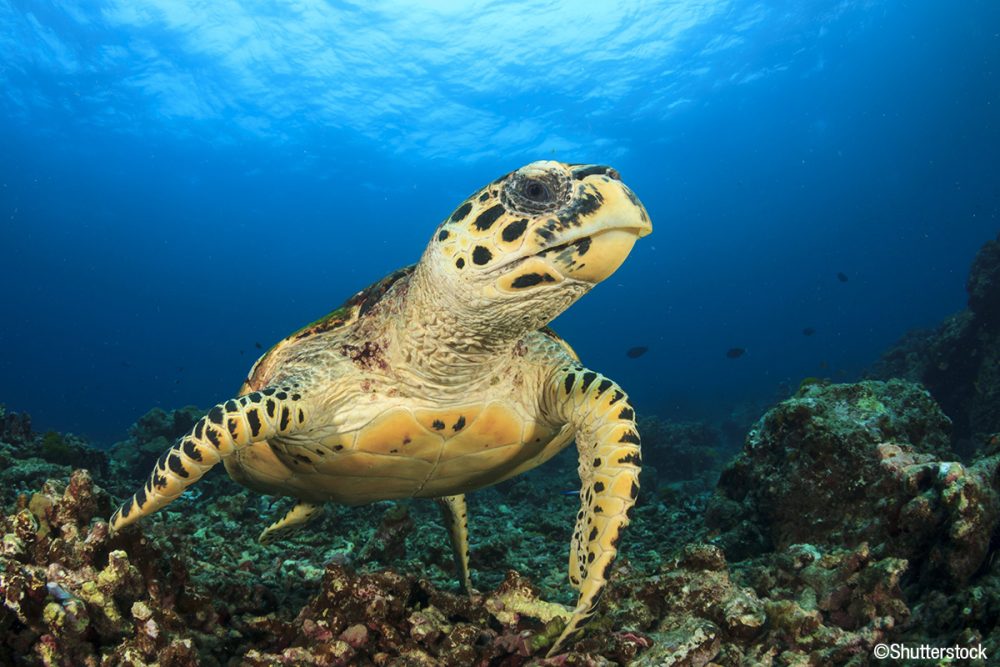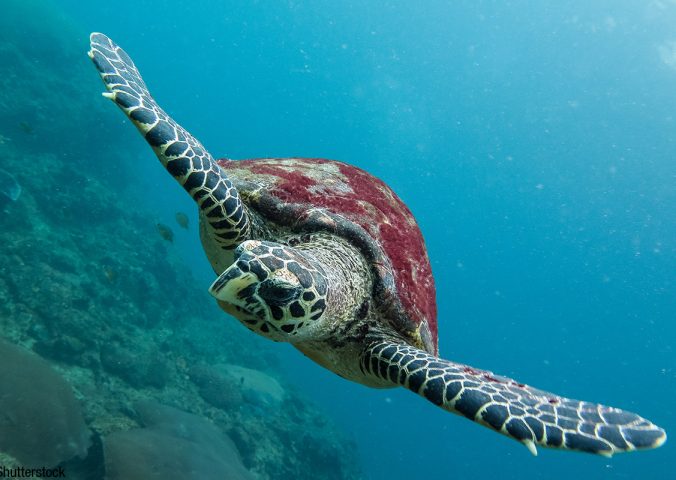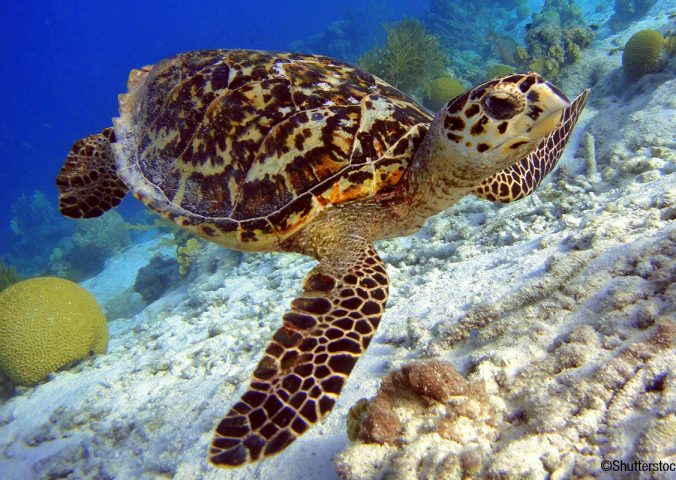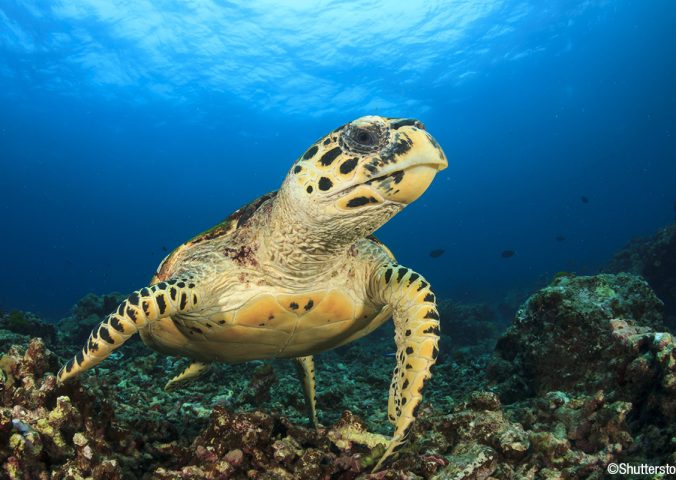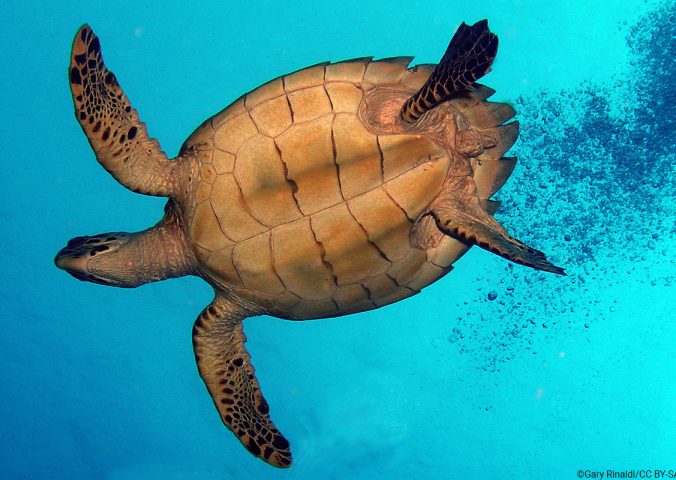About
Despite the Hawksbill turtle being a truly global species, females show the incredible behaviour of natal homing, returning to their original breeding grounds due to ‘breeding ground fidelity’.
Females will return to the very beach that they were born on, to lay their own eggs! It is believed that this occurs by use of magnetic sensing. Females will lay on average 80 eggs per nest, and all the hatchlings will emerge from the nest together, scurrying towards the sea in what is commonly known as a “nest explosion”. These turtles can be argued to be ecosystem engineers has they have a disproportionate impact on their environment compared to their size.
Hawksbills have been found to support healthy reefs by controlling sponges which would otherwise out-compete reef-building corals for space. Young hawksbill turtles are unable to dive deep and so spend their early lives floating amongst sea plants near the water’s surface.
Turtles and tortoises comprise the order of reptiles known as Testudines, whose closest relatives are birds and crocodiles. Testudines diverged from crocodiles and birds more than 250 million years ago, in the Late Permian or Early Triassic period. This is millions of years before dinosaurs walked the Earth!
Unfortunately, this species is in a massive population decline with an estimated 87% decline in number of mature females nesting annually over the last three hawksbill generations. This is due to a number of different anthropogenic impacts such as hunting, egg poaching, bycatch in fisheries, beach erosion and many more. There a number of conservation programmes running small schemes to protect their local nesting turtles, but there are also treaties and agreements to stop hunting and trade, public awareness campaigns, protected marine areas.
- Order: Testudines
- Family: Cheloniidae
- Population: Unknown
- Trend: decreasing
- Size: 62.5-114 cm
- Weight: 45-68 kg
EDGE Score
Distribution
This species has a circumglobal distribution throughout tropical and subtropical waters of the Atlantic, Indian and Pacific Ocean. They nest in at least 70 countries.
Habitat and Ecology
Hawksbills nest on insular sandy beaches throughout the tropics and subtropics. They are highly migratory and use a wide range of localities and habitats during the life time. They eat large amounts of algae, sponges, crustaceans and sea urchins.
